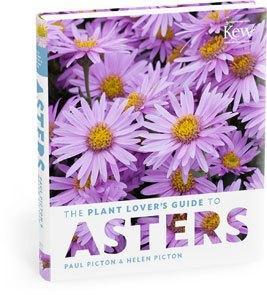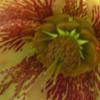
I have a backlog of books to review and although book reviews was almost the least popular subject for posts in the poll I carried out earlier this week I do feel duty bound to work through them so apologies for possibly a lot of book reviews in the coming weeks.
I thought it was timely to start with The Plant Lover’s Guide to Asters by Paul Picton and Helen Picton. I have to confess that Helen is a friend of mine and I am in awe of her and her father’s plant knowledge. A mutual friend said that horticultural knowledge was in Helen’s DNA and I suspect its true. Helen is the third generation to run Old Court Nurseries in Colwall which specialises in Asters – not a bad achievement especially when asters really went out of favour back in the 1970s when conifers became all the rage.
Anyway, the book is another of the Timberpress ‘The Plant Lover’s Guide’ series. I do think this is a successful format. You normally have some information on how to use the specific plant group in your garden, then plant profiles and lists of suitable varieties for different locations, cultivation tips and pests and diseases and then information about where to buy or see the plant.
The Aster book is no exception and I particularly enjoyed the ‘Designing with Asters’ section. In it Helen shows you that you can use asters in almost any setting whether it is the traditional herbaceous border, where they first found their popularity, or in prairie planting, through which they have had a revival. You can even grow them in pots, something I hadn’t realised at all and amazingly there are alpine asters. There is a reference to the recent name changes to asters although not too much technical stuff and the entries are all in the new names.
I also enjoyed the section ‘Understanding Asters’ which discusses the history of asters and their breeding. It is in itself a short history of horticultural trends over the last 100 years in the UK and really interesting, if like me, you are interested in the history of plant hunters and horticulturists.
Unbelievable there are profiles of 101 asters. I was surprised that there were so many varieties and the Pictons have tried to include varieties that are readily available. I am particularly interested in Aster x frikartii ‘Wunder von Stafa’, a low growing aster with large flowers which I think will look great in front of my roses to bring some color at this time of the year and hide the roses legs. Interesting there is a short section about growing asters with roses – wittingly entitled ‘Roses Need Friends’. Also appealing is Eurybia divaricata ‘Eastern Star’ another low growing aster which will tolerate a shady position. I must ask Helen if she has either in stock.
Throughout the book is generously illustrated with photos, the majority taken by Paul Picton or Helen’s husband, Ross Barbour. There are many close-ups of plants but also a significant number of gardens show-casing asters, many of them local to here. As with the other books in this series it is well written in an accessible format with has a friendly tone to it. Regardless of how experienced a gardener you are you will find something of interest to you.
If you are quick you can visit Old Court Nurseries and see the national collection – the Picton Garden and nursery are open every day until 18th October. If you are going to Malvern Autumn Show then it is only 10 minutes away and a good way to round off your visit to this part of the world. Helen and Ross will also be selling asters at the show.

